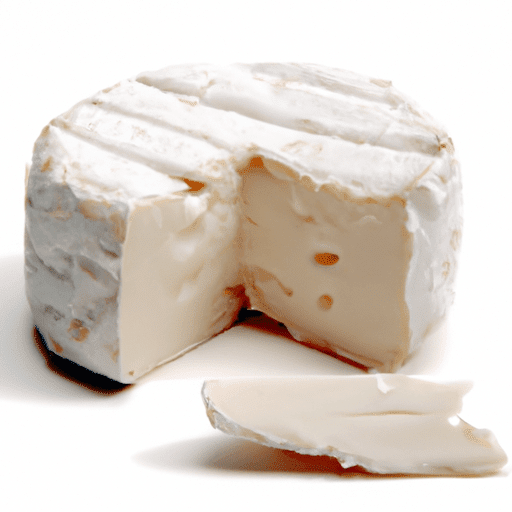The Versatile and Delicious Chevre: A Must-Try Ingredient in Your Kitchen
If you’re a fan of goat cheese, then you’re likely familiar with chevre. This creamy, tangy delight has become a staple in many kitchens for its distinct flavor and versatility in various dishes. In this blog post, we’ll explore the exquisite taste of chevre, its common uses in cooking, its nutritional value, and some interesting historical facts that make it even more intriguing.
A Taste Sensation like No Other
Chevre, which means “goat” in French, has a flavor that sets it apart from other cheeses. It boasts a creamy and velvety texture with a slight crumble, making it perfect for spreading or crumbling into recipes. The taste of chevre can vary slightly, ranging from tangy to earthy, depending on the age and production methods. Its unique flavor profile makes it a favorite among cheese enthusiasts and epicureans alike.
Versatile in the Kitchen
There are numerous ways to enjoy chevre in your culinary endeavors. Its versatility lends itself to a wide range of dishes and cooking techniques. Here are a few popular uses for chevre that will undoubtedly ignite your taste buds:
1. Spread it on Bread
Take your morning toast to new heights by spreading a generous amount of chevre on warm crusty bread. Top it with some fresh herbs or drizzle with honey for a delightful combination of flavors.
2. Salad Star
Crumble chevre onto your favorite salad for an added tangy richness. It pairs exceptionally well with greens, nuts, and fruits like pears or strawberries. The creamy texture of chevre also creates a harmonious balance with vinaigrettes.
3. Perfect Pasta
Add a decadent touch to your pasta dishes by incorporating chevre into creamy sauces. Toss it with cooked pasta, fresh herbs, and a sprinkle of parmesan for a quick and satisfying meal.
4. Chevre Stuffed Delights
Create mouthwatering stuffed recipes such as roasted bell peppers or mushrooms filled with chevre, sun-dried tomatoes, and fresh basil. Baking chevre inside these vegetables creates a delightful combination of flavors and textures.
5. Elegant Chevre Souffle
For those looking to impress, a chevre souffle never fails. Its light and airy texture combined with the tangy chevre flavor create a sophisticated and impressive dish that will have your guests coming back for more.
Nutritional Value
Besides being delicious, chevre also offers some nutritional benefits. It is lower in fat and calories compared to many other cheeses, making it a healthier option. Chevre is also an excellent source of protein, essential vitamins such as vitamin A, vitamin B, and minerals like calcium and phosphorus. It is particularly rich in healthy fatty acids like medium-chain triglycerides, which can support heart health.
A Rich History and Fun Facts
Chevre has a long history and an interesting set of facts that add to its allure. Here are a few noteworthy points about this delightful cheese:
- Goat cheese, of which chevre is a type, has been produced for over 8,000 years, making it one of the oldest cheeses in the world.
- The origins of chevre can be traced back to France, where it has been a cherished ingredient for centuries. It has since gained popularity globally.
- Chevre is traditionally made from fresh goat’s milk, ensuring its unmistakable flavor and unique qualities.
- Its production involves a combination of traditional and artisanal techniques, such as hand-molding and aging on straw mats.
- Chevre’s tangy taste intensifies with age, so you can choose your desired level of flavor intensity when purchasing.
Embrace the Tangy Delight!
Now that you’re well-acquainted with chevre, give it a try in your next culinary adventure. Whether you spread it on bread, crumble it into salads, or incorporate it into a hearty pasta dish, chevre is sure to elevate and enrich your meals. Its distinct taste, versatility, and impressive nutritional value make it a must-have ingredient in any food lover’s kitchen. So, go ahead and savor the tangy delight of chevre to add a touch of lusciousness to your cooking creations!
Chevre
Origin: Chevre is a type of cheese that originated in France. The name “chevre” means “goat” in French, which reflects its main ingredient, namely goat’s milk.
Common Uses: Chevre is a versatile cheese that can be used in both savory and sweet dishes. It is often enjoyed on its own as a spread on toast or crackers, or crumbled over salads. It can also be used as a topping for pizzas, added to pasta dishes, or melted on grilled sandwiches. In desserts, chevre can be incorporated into cheesecakes, tarts, or used as a filling in pastries.
Nutritional Benefits: Chevre is relatively low in calories compared to many other cheeses. It is a good source of protein, calcium, and vitamin D. Additionally, goat’s milk cheese like chevre tends to be easier to digest as it has smaller fat globules and slightly lower lactose content compared to cow’s milk cheese.
Unique Properties: Chevre has a distinct tangy and slightly acidic flavor, which is often described as “earthy” or “grassy.” Its texture can range from creamy when young to crumbly when aged. Chevre can have a smooth or wrinkled rind, depending on the production method. The aging process can greatly affect its taste and texture, with younger chevre being milder and creamier, and older chevre becoming more robust and crumbly.
Historical Significance: Goat’s milk cheese has a long history, dating back thousands of years. Ancient civilizations, including the Egyptians and Greeks, were known to make and consume goat’s milk cheese. Chevre has been an important part of French cuisine for centuries and continues to be a beloved cheese in the region. Today, chevre is also produced in other parts of the world, such as the United States, where it has gained popularity among cheese enthusiasts.




Use the share button below if you liked it.
It makes me smile, when I see it.